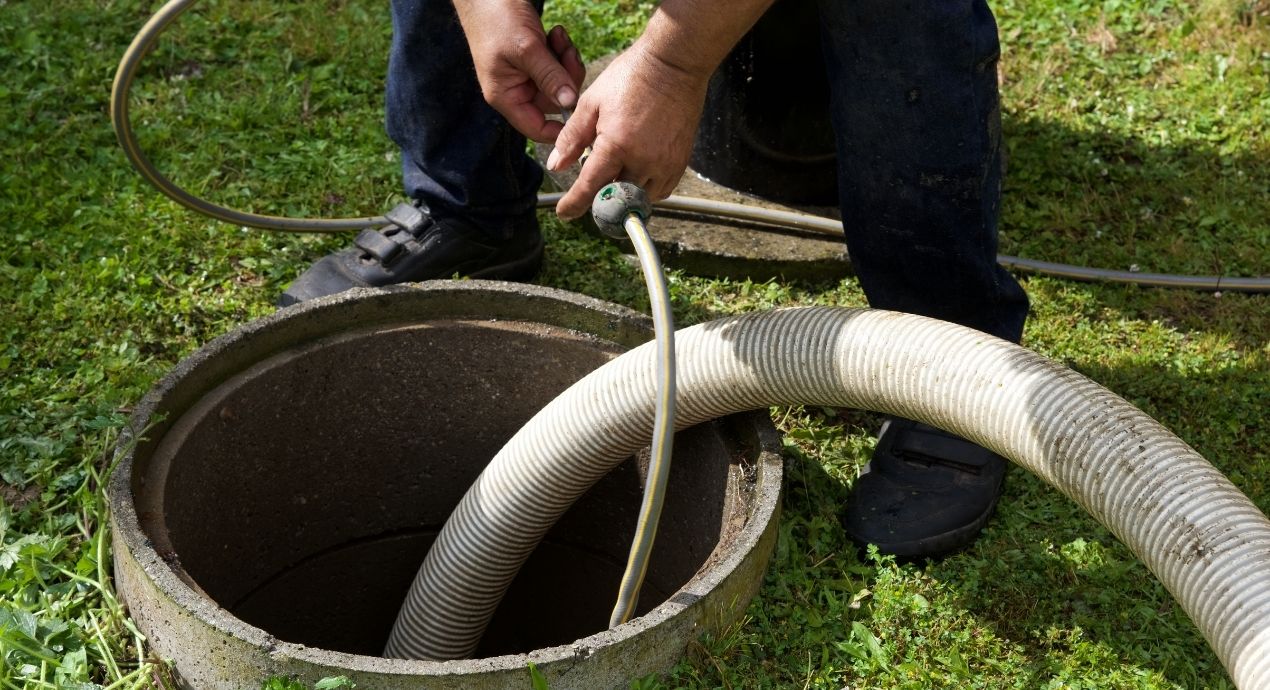
Contemplating coverage?
Subscribe to receive our emails & get
$200 OFF!
Have questions?
Call us: (833) 544-8273


Written By Erin Easley
According to the EPA, more than one in five households in the United States rely on septic systems instead of public sewer systems. For homes with septic systems, regular maintenance of the tank and overall system is critical. Neglecting septic tank system maintenance can lead to plumbing problems, sewage backups, and expensive repair costs. Fortunately, septic or sewage tank maintenance is not complicated. Let's explore some basic septic tank maintenance tips so you can keep your septic system in excellent shape for many years to come.
There's a reason Liberty Home Guard was rated the #1 Home Warranty Service by U.S. News and World Report for 2021, 2022, 2023, and 2024. Check out our services.
Learn MoreSeptic tanks are designed to allow wastewater to run off in a drainfield that surrounds the tank, but tanks still need to be pumped to remove solids. This is not a task to forget or put off. The average household should service the tank every three to five years, but this is dependent on the size of the tank and extent of its use. A smaller tank may need more frequent servicing, while a large tank in a home with a single resident may need less frequent servicing.
Once you've determined how often you need to pump your home's septic tank, create a log to keep track of past service dates and to stay on top of future dates. You can also ask your servicer about replacing your system's effluent filter and cleaning your system with high-pressure water jetting.
Preventive care is an important part of maintaining a septic tank. Never flush paper towels, napkins, tampons, diapers, tissues, cotton swabs, or other such items down the toilet. Don't flush cat litter or pet waste. Likewise avoid introducing food refuse into your system. This means limiting garbage disposal use and not flushing things such as coffee grounds, cooking oils, fruit and vegetable waste, and animal fats. All of these objects can strain a septic system and impede drainage of wastewater in the drainfield.
Also, don't assume something is fine to flush down the toilet or drain just because it's a liquid. Chemical cleaners, paint, paint thinner, gasoline, motor oil, antifreeze, acids, and other hazard chemicals should not go down the drain. These things can damage your pipes and septic tank. They also kill the bacteria in your septic tank that help to break down waste.
Conserving water isn't just good for the environment it's also good for your septic tank. Reducing the amount of water that flows down your drains ensures efficient drainage of your septic tank. At the very least, it's a good idea to avoid using too much water in a short span of time. For example, don't run the washing machine, dishwasher, and shower all at once.
Finally, an important part of home septic tank maintenance is protecting the integrity of the tank itself. Be mindful of where the tank is buried on your property. Don't plant trees or large shrubs within 100 feet or so, as their expanding roots can damage the tank. Don't park a car, trailer, or other heavy machine above your tank. Don't build a deck or other structure above your tank.
And remember that your tank is designed to drain into the surrounding soil. This means you should work to keep the area relatively dry. It's a good idea to plant grass above the tank. If necessary, adjust your property's drainage to divert rainwater away from your tank.
A damaged septic tank can cost anywhere from $3,000 to more than $10,000 to replace. Basic maintenance is key, but septic tank home warranty coverage can provide additional protection.
With Liberty Home Guard, you can find an affordable plan to cover your home's septic system. A home warranty can make periodic maintenance more convenient. It can also protect you financially if your septic system develops an issue.
Reach out to our team at (833)-544-8273 to learn more.
Stay Ahead of Potential
Home Mishaps!
Subscribe to our Liberty Home Guard Newsletter and gain access to exclusive content that ensures your peace of mind.